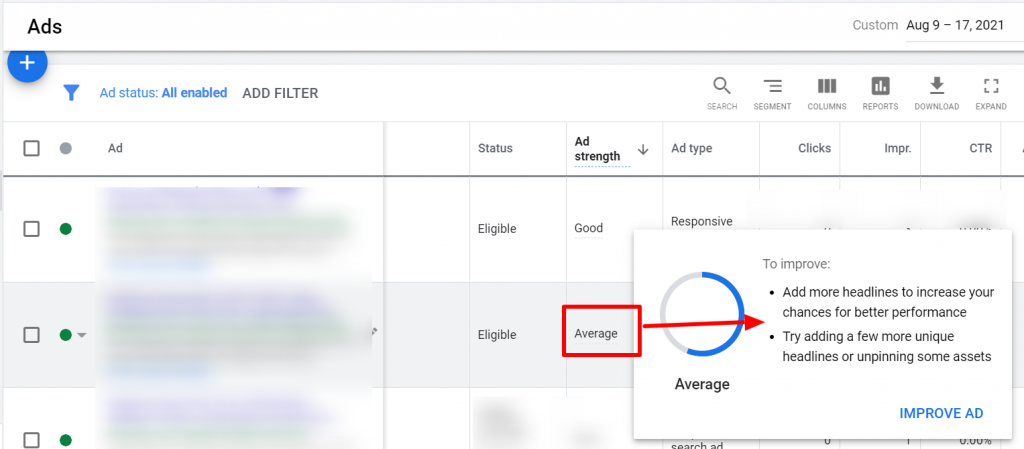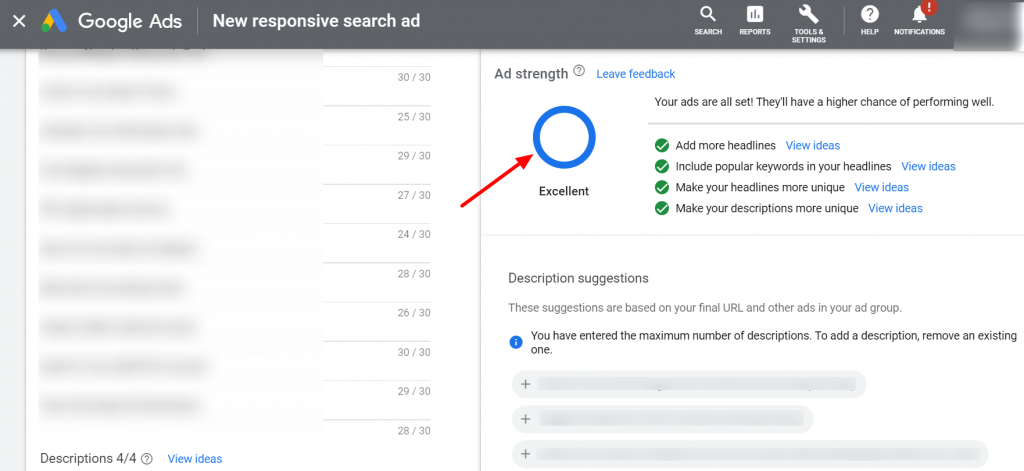Ad strength is a unique way to identify the potential of your Responsive Search Ads. So what are you doing with the recommendations to improve your ad’s relevancy? We discuss what RSA ad strength means and what you should do about it.
While creating the RSA‘s you are often caught in the struggle of optimizing the ad strength. We had a similar experience and decided to check how the ad strength would impact the overall performance.
But before that let’s quickly understand what ad strength is and what it depicts
About Ad Strength
With Ad Strength, Google recommends advertisers to optimize their ad copy and provide the right information to the customers. They rank your ad from poor to excellent basis an algorithm that assesses the effectiveness of your ads
Comparing Ad Strength & Performance
Looking at how much importance is given to ad strength, we decided to create ad copies for each ad strength. It was to check whether an Excellent ad strength is more effective than an average or good ad strength ad copy?
Here is a quickly background of what we did:
1. In the ad with poor ad strength, we created the ad without taking much of Google Ads recommendation of using popular keywords.
2. We added just the minimum number of headlines (3) and descriptions (2) needed in the RSA ad format in the ad with average ad strength.
3. In the good ad strength ad copy, we added headlines and descriptions that were needed to get the good ad strength.
4. And, in the ad with Excellent ad strength, we considered Google’s suggestion to update ad copy with the recommended keywords.
below are the snapshots of ads that have Poor, Average, Good & Excellent ad strength.
Poor Ad Strength – Ad Copy 1

Average Ad Strength – Ad Copy 2

Good Ad Strength – Ad Copy 3

Excellent Ad Strength – Ad Copy 4

The Results
We let the ads run for a week, to assess how much impact the ad strength would have on the campaign performance. Here is what we have found :
But before we share, we have an important thing for you to note. Other factors would play an important role in ascertaining the performance of your ads. Such as the number of ad copies in the ad group, your ad rotation settings, etc. Our analysis, cannot be generalized but can be used to understand why a certain ad is given a certain ad strength.
1. The campaign with excellent ad fared better than the rest, as it gave the maximum clicks when compared with other ad strength ad copies in its ad group
2. The Good and Average ad strength more or less behaved similarly. These ads were just a step ahead or a step behind the other. Here no constructive conclusion could be drawn.
3. The Poor ad strength ad copy also garnered some impressions, but it resulted in no clicks. If suggestions by Google were to be implemented, we are sure that this ad copy would have performed competitively.
So, overall we think that the below-mentioned factors impact your ad’s relevance and performance:
1. Using popular keywords or the keywords you are bidding for, in your ad copy
2. Making sure that the ad copy is leading the user to a relevant landing page
3. Offering multiple headlines and description options is a constructive way to deliver your message. So, create multiple versions of it with the right call to action
4. If creating multiple ad copies in the same ad group, ensure that each component of the ad stands apart from the other
5. Your ads, no matter what ad strength it has, will get you impressions. But to ensure that it drives results, review your ad copy and update it with the missing elements.
Related Links:





Stop the wasted ad spend. Get more conversions from the same ad budget.
Our customers save over $16 Million per year on Google and Amazon Ads.